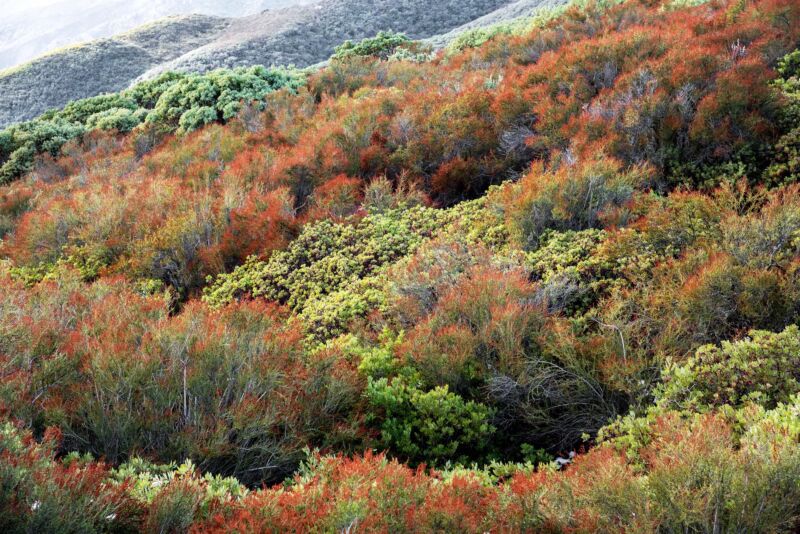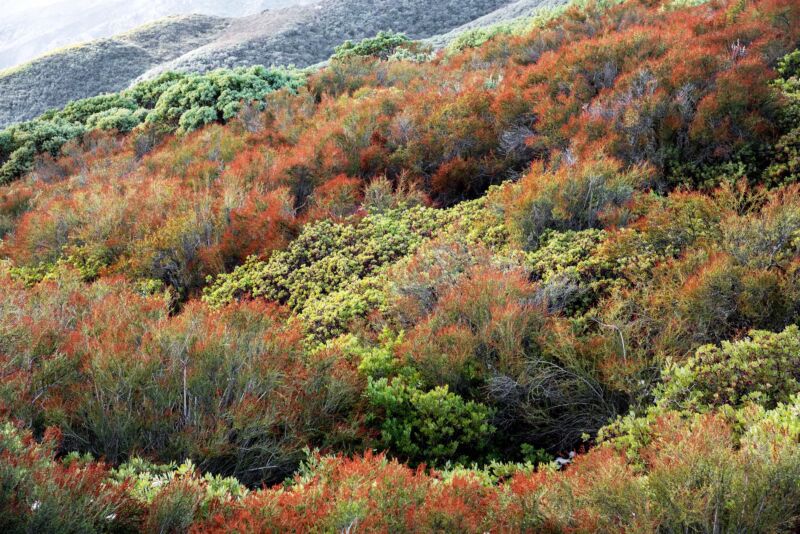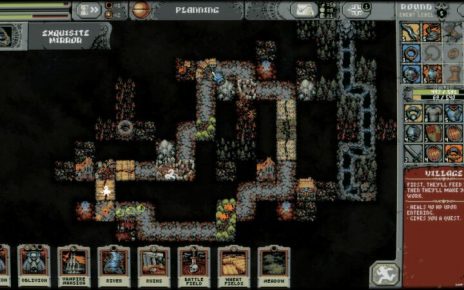
Enlarge (credit: Bryant Baker, Los Padres ForestWatch)
If you’re kind of judgmental when it comes to plants, you might describe the chamise plant as “meh.” Technically it’s a shrub, which in the hierarchy of plant types barely outranks a weed. Chamise grows up to a dozen feet tall and sprouts needle-like leaves less than a half-inch long, making it look like overgrown rosemary. Only it doesn’t really smell, even though it’s a member of the rose family.
Appearances and scents aside, chamise turns out to be a fascinating plant, one critical not only to the California landscape but to the safety of its human residents. When fire scientists want to know how flammable the state’s vegetation might be, they don’t rely on some newfangled gadget. They rely on chamise. “It’s a really pretty and kind of understated shrub,” says Bryant Baker, conservation director of the Los Padres ForestWatch, which advocates for the protection of California’s habitats. “And I think because it’s so common, it’s often taken for granted.”
But Californians ignore it at their peril, because it is an excellent indicator of how dry the whole landscape is getting. Chamise dominates native chaparral ecosystems up and down the state, dense shrublands that are too arid for trees. (This is a Mediterranean climate, after all, in which rain stops in the spring and doesn’t restart until autumn.) But the chamise is beautifully adapted to ride out the baking heat: those tiny, leathery leaves have far less surface area than a broadleaf, so they don’t lose as much moisture. “These plants are adapted to go for many months without a single drop of water, which is pretty amazing,” says Baker. “You don’t usually find that outside of desert areas.”





